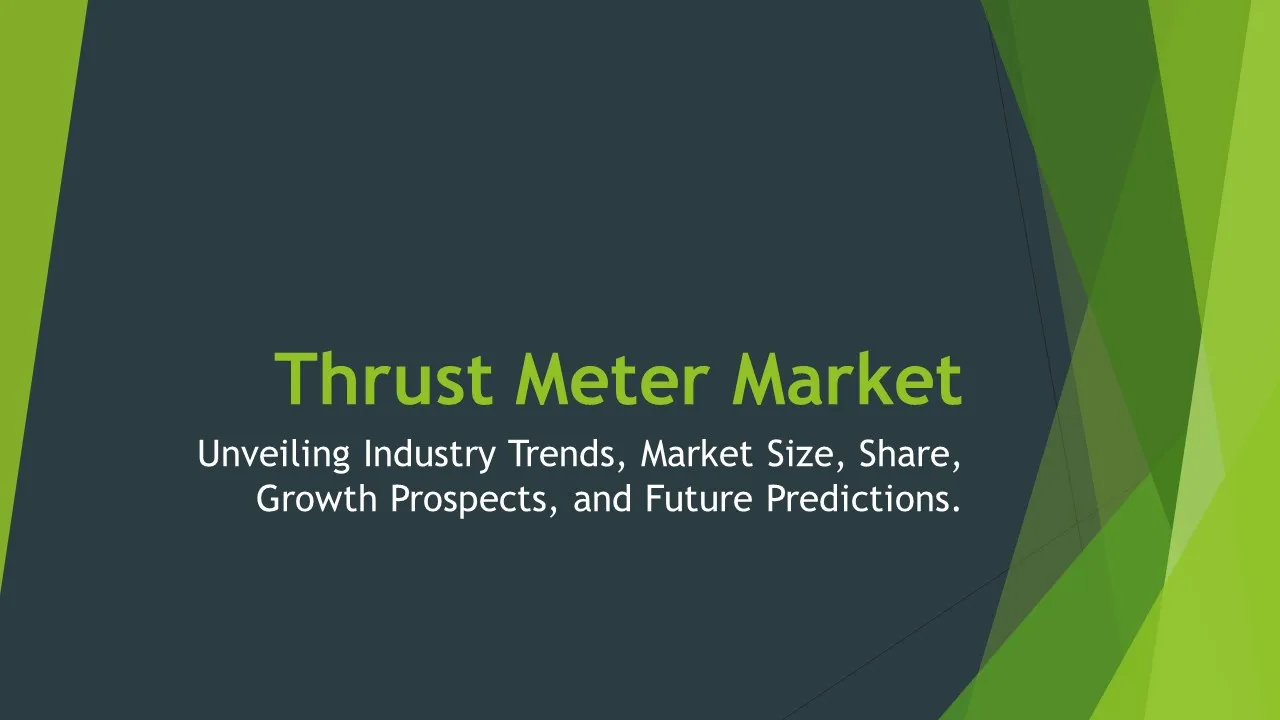Level Measurement Sensors
Level Measurement Sensors Market Segments - by Technology (Ultrasonic, Radar, Capacitance, Laser, and Contact), Application (Industrial, Chemical, Food & Beverage, Oil & Gas, and Water & Wastewater), End-User (Oil & Gas, Chemicals, Water & Wastewater, Pharmaceuticals, and Power Generation), Type (Point Level Sensors, Continuous Level Sensors, and Multi-Point Level Sensors), and Region (North America, Europe, Asia Pacific, Latin America, and Middle East & Africa) - Global Industry Analysis, Growth, Share, Size, Trends, and Forecast 2025-2035
- Report Preview
- Table Of Content
- Segments
- Methodology
Level Measurement Sensors Market Outlook
The global level measurement sensors market is projected to reach approximately USD 4.5 billion by 2035, growing at a CAGR of around 6.5% during the forecast period from 2025 to 2035. This growth can be attributed to the increasing demand for precise level measurement in various industries, such as oil and gas, chemicals, and food and beverage. The need for automation and process optimization in industrial applications enhances the adoption of advanced level measurement technologies. Additionally, the rising focus on safety and compliance standards, particularly in hazardous environments, is expected to propel the market growth. Emerging technologies, such as IoT and smart sensors, are also contributing to the advancement and adoption of level measurement sensors, allowing for real-time monitoring and data analysis.
Growth Factor of the Market
The growth of the level measurement sensors market is significantly driven by the increasing focus on safety regulations and standards across various industries, which necessitates precise monitoring of liquid and solid levels to avoid spills and accidents. Furthermore, the rise in industrial automation is pushing manufacturers to integrate advanced sensing technologies to enhance operational efficiency and reduce downtime. In addition, the growing trend towards sustainable practices urges industries to optimize resource usage and minimize waste, thereby increasing the adoption of level measurement solutions. Technological advancements, including the development of wireless and smart sensors, are also contributing to market expansion by allowing for easier installation and improved monitoring capabilities. Moreover, the rising demand for level measurement sensors in emerging economies is providing substantial growth opportunities for market players.
Key Highlights of the Market
- The market is expected to exhibit a CAGR of 6.5% from 2025 to 2035.
- Technological advancements in sensor technologies are driving product innovation.
- Industrial applications dominate the market due to high demand for process optimization.
- North America holds a significant share of the market due to established industries.
- Wireless level measurement sensors are gaining traction for their ease of installation.
By Technology
Ultrasonic:
Ultrasonic level measurement sensors utilize sound waves to detect the level of liquids or solids in a container. These sensors are widely appreciated for their non-contact measurement capabilities, making them ideal for applications where contamination must be avoided. They are particularly useful in industrial environments where corrosive substances are present, as they can operate without any direct contact with the material being measured. The ability to provide accurate readings regardless of temperature and pressure variations further enhances their utility across various sectors. Ultrasonic sensors are commonly used in applications such as water and wastewater management, chemical processing, and food and beverage industries, contributing to their significant market share.
Radar:
Radar level measurement sensors employ microwave radar signals to accurately determine the level of materials within a container. This technology is especially beneficial in applications involving high temperatures and pressures, as it is unaffected by changes in these conditions. Radar sensors can measure both liquids and solids with high precision, making them versatile for various industrial applications, including oil and gas, chemicals, and pharmaceuticals. Their ability to operate in challenging environments, such as those with vapors, dust, or foam, further boosts their adoption. The continuous advancements in radar technology, including the development of guided wave radar sensors, are also contributing to their growing market presence.
Capacitance:
Capacitance level measurement sensors function by measuring the change in capacitance caused by the level of a dielectric material within a container. These sensors are particularly effective in applications where precise level measurement is crucial, such as in the food and beverage industry, where maintaining product quality is paramount. Capacitance sensors are known for their reliability and accuracy, even in the presence of temperature variations and pressure changes. Their compact design and ease of installation make them favorable for various industrial setups. The growing demand for continuous monitoring in production processes is expected to further drive the growth of capacitance level measurement sensors in the coming years.
Laser:
Laser level measurement sensors utilize laser beams to measure the distance to the surface of a material, providing highly accurate level readings. This technology is increasingly being adopted in industries requiring precise measurements, such as pharmaceuticals and food processing. Laser sensors are non-contact devices, eliminating the risk of contamination, and can operate effectively in challenging conditions, including high dust and vapor environments. Their ability to measure both liquid and solid surfaces makes them versatile for various applications. Moreover, advancements in laser technology, including time-of-flight measurements, are leading to enhanced performance and increased adoption in diverse industrial sectors.
Contact:
Contact level measurement sensors are typically used in situations where direct contact with the material is acceptable. These sensors can include float switches and rod-type sensors, which provide reliable measurements in liquid applications. The main advantage of contact sensors is their simplicity and cost-effectiveness, making them suitable for small-scale operations and applications with lower complexity. However, limitations arise in scenarios involving corrosive materials or where contamination is a concern. As a result, while contact sensors remain a staple in many industries, the trend towards automation and more sophisticated measuring techniques is pushing manufacturers towards non-contact technologies.
By Application
Industrial:
Industrial applications encompass a wide range of sectors, including manufacturing, processing, and packaging. Level measurement sensors play a crucial role in these environments by ensuring accurate monitoring of material levels, which is essential for process efficiency and safety. The demand for automation in industrial settings is fostering the adoption of advanced level measurement technologies that can provide real-time data and analytics. These sensors help optimize resource use, prevent overflows, and mitigate safety hazards, thereby enhancing overall operational efficiency. The ongoing industrial transformation, driven by Industry 4.0, is expected to further propel the growth of level measurement sensors in this sector.
Chemical:
The chemical industry relies heavily on accurate level measurement to ensure safe and efficient processing of hazardous materials. Level measurement sensors are employed to monitor the levels of chemicals in reactors, storage tanks, and pipelines. The ability to operate in extreme temperatures and corrosive environments makes advanced level measurement technologies indispensable in this industry. Compliance with stringent safety regulations further drives the need for reliable measurement solutions. The increasing focus on process optimization and risk management in chemical processing is expected to boost the adoption of level measurement sensors, ensuring operational safety while maximizing productivity.
Food & Beverage:
In the food and beverage sector, maintaining product quality and safety is of utmost importance. Level measurement sensors are used to monitor ingredient levels, production processes, and storage tanks. Accurate level monitoring helps prevent overflows and ensures consistency in production, which is crucial for maintaining product quality. Non-contact sensors, such as ultrasonic and radar technologies, are particularly favored in this industry due to their ability to eliminate contamination risks. Growing consumer demand for high-quality food products is driving the adoption of advanced level measurement solutions, ensuring compliance with safety standards and enhancing operational efficiency.
Oil & Gas:
The oil and gas industry presents unique challenges for level measurement due to the hazardous nature of materials being handled. Precise level monitoring is essential for ensuring safety, preventing spills, and optimizing extraction and refining processes. Level measurement sensors are utilized in various applications, including tank measurement, pipeline monitoring, and offshore platforms. The increasing complexity of oil and gas operations, coupled with the need for enhanced safety measures, is driving the demand for advanced level measurement technologies. The ongoing transition towards more sustainable practices in this sector is also prompting investments in innovative measurement solutions to reduce environmental impact.
Water & Wastewater:
Water and wastewater management is a critical application area for level measurement sensors, as accurate monitoring is essential for maintaining environmental standards and ensuring operational efficiency. These sensors are employed in treatment plants, storage facilities, and distribution systems to monitor water levels and prevent overflow. The increasing focus on sustainable water management practices and regulatory compliance is driving the adoption of advanced level measurement technologies in this sector. Furthermore, the integration of IoT and automation in water treatment processes is expected to enhance the demand for smart level measurement solutions, revolutionizing traditional monitoring practices.
By User
Oil & Gas:
The oil and gas sector is one of the largest consumers of level measurement sensors, as precise monitoring is essential for ensuring safety and operational efficiency. Companies in this industry rely on advanced sensor technologies to monitor liquid levels in storage tanks, pipelines, and offshore platforms. The need for accurate measurement is heightened by the hazardous nature of the materials handled, necessitating the use of reliable and robust sensors. The increasing complexity of extraction and refining processes, coupled with stringent safety regulations, is driving the demand for innovative level measurement solutions that enhance operational safety while optimizing resource usage.
Chemicals:
Chemical manufacturers utilize level measurement sensors extensively to ensure safe and efficient processing of materials. Accurate level monitoring is critical for maintaining the integrity of chemical processes and preventing hazardous situations. Level measurement solutions help improve operational efficiency by optimizing resource use and minimizing waste. The ongoing advancements in sensor technology, such as the development of wireless and smart sensors, are facilitating real-time monitoring and data analysis, further driving their adoption in the chemical sector. As the industry continues to face regulatory challenges, the demand for reliable level measurement solutions is expected to grow.
Water & Wastewater:
Water and wastewater treatment facilities are major users of level measurement sensors, as accurate monitoring is crucial for maintaining compliance with environmental regulations and ensuring the efficient operation of treatment processes. These sensors are employed to monitor levels in tanks, reservoirs, and distribution systems, preventing overflows and ensuring optimal resource usage. The rising global focus on water scarcity and sustainable management practices is driving the demand for advanced level measurement technologies in this sector. The integration of IoT and automation in water management is further enhancing the need for smart level measurement solutions, revolutionizing traditional monitoring practices.
Pharmaceuticals:
In the pharmaceutical industry, level measurement sensors are essential for ensuring the accurate monitoring of materials in production processes. Precise level measurement is critical for maintaining product quality and adhering to stringent regulatory standards. The use of advanced level measurement technologies, such as non-contact sensors, allows for safe operation in sterile environments, preventing contamination. As the pharmaceutical industry continues to grow, driven by increasing demand for medications and therapies, the need for reliable level measurement solutions is expected to rise. The focus on automation and process optimization in pharmaceutical production is also contributing to the adoption of advanced measurement technologies.
Power Generation:
The power generation sector relies on level measurement sensors to monitor water levels in boilers, cooling towers, and other critical systems. Accurate level monitoring is essential for ensuring operational efficiency and safety in power generation processes. The increasing focus on renewable energy sources and the need for efficient resource management are driving the demand for advanced level measurement technologies in this sector. The ongoing transition towards automation in power generation plants is further enhancing the adoption of smart level measurement solutions, enabling real-time monitoring and data analysis to optimize performance and reduce downtime.
By Type
Point Level Sensors:
Point level sensors are designed to detect the presence or absence of a material at a specific point within a container. These sensors are widely used in applications where level monitoring is critical, such as in tanks and silos. Point level sensors can utilize various technologies, including mechanical floats, capacitive sensing, and ultrasonic measurements, to provide reliable and accurate readings. They are particularly advantageous in situations where continuous monitoring is not required, making them suitable for small-scale operations. The simplicity and cost-effectiveness of point level sensors contribute to their widespread use across various industries.
Continuous Level Sensors:
Continuous level sensors provide real-time monitoring of material levels within a container, offering a continuous output signal that reflects the level changes. This type of sensor is essential in applications where maintaining precise levels is critical for operational efficiency and safety. Continuous level sensors can utilize technologies such as radar, ultrasonic, or hydrostatic pressure measurements, enabling them to deliver accurate readings in various conditions. Their ability to provide ongoing data allows for timely decision-making and process optimization, making them suitable for industries such as chemicals, food and beverage, and water management.
Multi-Point Level Sensors:
Multi-point level sensors are designed to measure levels at multiple points within a container, providing enhanced monitoring capabilities. These sensors can utilize a combination of technologies, such as capacitive, resistive, or optical measurements, to deliver comprehensive data on material levels. Multi-point level sensors are particularly beneficial in applications with varying material properties or where precise level monitoring is required in complex processes. Their ability to provide detailed insights into material levels enhances operational efficiency and safety, making them increasingly popular in industrial applications, such as oil and gas, chemicals, and water treatment.
By Region
The North American region holds a significant share of the global level measurement sensors market, driven by the presence of established industries and a strong emphasis on safety and compliance standards. The increasing adoption of automation and advanced technologies in industries such as oil and gas, chemicals, and food and beverage is further propelling market growth in this region. The market is expected to grow at a CAGR of 6.2% during the forecast period, reflecting the robust demand for innovative level measurement solutions. Moreover, the growing focus on environmental sustainability and water management practices is expected to contribute to the rising demand for level measurement sensors in North America.
In Europe, the level measurement sensors market is also experiencing significant growth, driven by the increasing emphasis on process optimization and safety regulations across various industries. The region's strong manufacturing base and the ongoing transition towards automation and smart technologies are enhancing the adoption of advanced level measurement solutions. Additionally, the rising demand for accurate monitoring in the chemical, pharmaceutical, and food and beverage sectors is contributing to market expansion. The European market is expected to witness a steady growth trajectory, with a CAGR of approximately 5.8% during the forecast period, supported by ongoing investments in innovative measurement technologies.
Opportunities
The level measurement sensors market offers numerous opportunities for growth, particularly driven by technological advancements and the increasing focus on automation across various industries. The integration of IoT and smart technologies is revolutionizing traditional measurement practices, allowing for real-time monitoring and data analytics that enhance operational efficiency and decision-making. As industries continue to embrace digital transformation, the demand for advanced level measurement solutions that provide reliable and accurate data is expected to rise significantly. Moreover, the growing emphasis on sustainability and resource optimization is leading to increased investments in innovative measurement technologies that minimize waste and enhance productivity, offering substantial growth prospects for market players.
Another significant opportunity lies in the expansion of the level measurement sensors market in emerging economies. Countries in Asia Pacific, Latin America, and the Middle East are witnessing rapid industrialization and urbanization, driving the demand for advanced measurement solutions across various sectors, including oil and gas, chemicals, and water management. As these regions continue to develop, the need for efficient resource management and compliance with safety regulations is expected to create a favorable environment for the adoption of level measurement technologies. Furthermore, the rising investments in infrastructure development and the increasing focus on sustainability in these regions present lucrative opportunities for market participants to expand their presence and capture a larger share of the growing market.
Threats
The level measurement sensors market faces several threats that could impact its growth trajectory. One significant concern is the rapid pace of technological change, which can create challenges for companies to keep up with the latest advancements and innovations. As new technologies emerge, there is a risk of existing products becoming obsolete, leading to increased competition and pricing pressures in the market. Additionally, the reliance on specific industries, such as oil and gas and chemicals, exposes the market to fluctuations in demand due to economic downturns or changes in regulatory frameworks. Companies that are unable to adapt to these changes may find it challenging to maintain their market position.
Another critical threat to the level measurement sensors market is the potential for supply chain disruptions. The ongoing global challenges, such as geopolitical tensions, natural disasters, and pandemics, can significantly impact the availability of raw materials and components needed for manufacturing level measurement sensors. These disruptions can lead to increased production costs and delays in product delivery, negatively affecting customer satisfaction and overall market competitiveness. Furthermore, the growing focus on environmental sustainability may push companies to adopt eco-friendly practices, which could require additional investments in research and development, posing challenges for smaller players in the market.
Competitor Outlook
- Siemens AG
- Emerson Electric Co.
- Honeywell International Inc.
- Endress+Hauser AG
- VEGA Grieshaber KG
- KROHNE Group
- Yokogawa Electric Corporation
- ABB Ltd.
- Magnetrol International, Inc.
- ATLAS Scientific
- LevelTech
- Brooks Automation, Inc.
- Omega Engineering, Inc.
- FMC Technologies
- Tek-Trol, Inc.
The competitive landscape of the level measurement sensors market is characterized by the presence of several key players, ranging from established multinational corporations to innovative startups. Major companies are constantly investing in research and development to enhance their product offerings and stay ahead of technological advancements. Strategic partnerships, mergers, and acquisitions are prevalent as companies seek to expand their market presence and leverage complementary strengths. Furthermore, the trend towards smart manufacturing and IoT integration is pushing companies to develop advanced measurement solutions that cater to the evolving needs of their customers. The competitive environment is dynamic, with players vying to capture market share by providing innovative and reliable level measurement solutions across various industries.
Siemens AG is one of the prominent players in the level measurement sensors market, offering a wide range of advanced solutions for industrial applications. The company's commitment to innovation and sustainability has positioned it as a leader in the industry. Siemens’ level measurement products are known for their reliability, accuracy, and integration with digital technologies, enabling customers to optimize processes and enhance efficiency. Additionally, the company’s extensive global presence allows it to cater to diverse market needs and provide localized support to customers across various regions.
Emerson Electric Co. is another significant player in the market, specializing in automation solutions and process control technologies. The company's level measurement sensors are widely used in industries such as oil and gas, chemicals, and food and beverage. Emerson's focus on digital transformation and smart technologies has led to the development of advanced level measurement solutions that enable real-time monitoring and data analytics. The company's strong emphasis on customer collaboration and innovation has positioned it as a key player in the level measurement sensors market.
1 Appendix
- 1.1 List of Tables
- 1.2 List of Figures
2 Introduction
- 2.1 Market Definition
- 2.2 Scope of the Report
- 2.3 Study Assumptions
- 2.4 Base Currency & Forecast Periods
3 Market Dynamics
- 3.1 Market Growth Factors
- 3.2 Economic & Global Events
- 3.3 Innovation Trends
- 3.4 Supply Chain Analysis
4 Consumer Behavior
- 4.1 Market Trends
- 4.2 Pricing Analysis
- 4.3 Buyer Insights
5 Key Player Profiles
- 5.1 ABB Ltd.
- 5.1.1 Business Overview
- 5.1.2 Products & Services
- 5.1.3 Financials
- 5.1.4 Recent Developments
- 5.1.5 SWOT Analysis
- 5.2 LevelTech
- 5.2.1 Business Overview
- 5.2.2 Products & Services
- 5.2.3 Financials
- 5.2.4 Recent Developments
- 5.2.5 SWOT Analysis
- 5.3 Siemens AG
- 5.3.1 Business Overview
- 5.3.2 Products & Services
- 5.3.3 Financials
- 5.3.4 Recent Developments
- 5.3.5 SWOT Analysis
- 5.4 KROHNE Group
- 5.4.1 Business Overview
- 5.4.2 Products & Services
- 5.4.3 Financials
- 5.4.4 Recent Developments
- 5.4.5 SWOT Analysis
- 5.5 Tek-Trol, Inc.
- 5.5.1 Business Overview
- 5.5.2 Products & Services
- 5.5.3 Financials
- 5.5.4 Recent Developments
- 5.5.5 SWOT Analysis
- 5.6 ATLAS Scientific
- 5.6.1 Business Overview
- 5.6.2 Products & Services
- 5.6.3 Financials
- 5.6.4 Recent Developments
- 5.6.5 SWOT Analysis
- 5.7 FMC Technologies
- 5.7.1 Business Overview
- 5.7.2 Products & Services
- 5.7.3 Financials
- 5.7.4 Recent Developments
- 5.7.5 SWOT Analysis
- 5.8 Endress+Hauser AG
- 5.8.1 Business Overview
- 5.8.2 Products & Services
- 5.8.3 Financials
- 5.8.4 Recent Developments
- 5.8.5 SWOT Analysis
- 5.9 VEGA Grieshaber KG
- 5.9.1 Business Overview
- 5.9.2 Products & Services
- 5.9.3 Financials
- 5.9.4 Recent Developments
- 5.9.5 SWOT Analysis
- 5.10 Emerson Electric Co.
- 5.10.1 Business Overview
- 5.10.2 Products & Services
- 5.10.3 Financials
- 5.10.4 Recent Developments
- 5.10.5 SWOT Analysis
- 5.11 Brooks Automation, Inc.
- 5.11.1 Business Overview
- 5.11.2 Products & Services
- 5.11.3 Financials
- 5.11.4 Recent Developments
- 5.11.5 SWOT Analysis
- 5.12 Omega Engineering, Inc.
- 5.12.1 Business Overview
- 5.12.2 Products & Services
- 5.12.3 Financials
- 5.12.4 Recent Developments
- 5.12.5 SWOT Analysis
- 5.13 Honeywell International Inc.
- 5.13.1 Business Overview
- 5.13.2 Products & Services
- 5.13.3 Financials
- 5.13.4 Recent Developments
- 5.13.5 SWOT Analysis
- 5.14 Magnetrol International, Inc.
- 5.14.1 Business Overview
- 5.14.2 Products & Services
- 5.14.3 Financials
- 5.14.4 Recent Developments
- 5.14.5 SWOT Analysis
- 5.15 Yokogawa Electric Corporation
- 5.15.1 Business Overview
- 5.15.2 Products & Services
- 5.15.3 Financials
- 5.15.4 Recent Developments
- 5.15.5 SWOT Analysis
- 5.1 ABB Ltd.
6 Market Segmentation
- 6.1 Level Measurement Sensors Market, By Type
- 6.1.1 Point Level Sensors
- 6.1.2 Continuous Level Sensors
- 6.1.3 Multi-Point Level Sensors
- 6.2 Level Measurement Sensors Market, By User
- 6.2.1 Oil & Gas
- 6.2.2 Chemicals
- 6.2.3 Water & Wastewater
- 6.2.4 Pharmaceuticals
- 6.2.5 Power Generation
- 6.3 Level Measurement Sensors Market, By Technology
- 6.3.1 Ultrasonic
- 6.3.2 Radar
- 6.3.3 Capacitance
- 6.3.4 Laser
- 6.3.5 Contact
- 6.4 Level Measurement Sensors Market, By Application
- 6.4.1 Industrial
- 6.4.2 Chemical
- 6.4.3 Food & Beverage
- 6.4.4 Oil & Gas
- 6.4.5 Water & Wastewater
- 6.1 Level Measurement Sensors Market, By Type
7 Competitive Analysis
- 7.1 Key Player Comparison
- 7.2 Market Share Analysis
- 7.3 Investment Trends
- 7.4 SWOT Analysis
8 Research Methodology
- 8.1 Analysis Design
- 8.2 Research Phases
- 8.3 Study Timeline
9 Future Market Outlook
- 9.1 Growth Forecast
- 9.2 Market Evolution
10 Geographical Overview
- 10.1 Europe - Market Analysis
- 10.1.1 By Country
- 10.1.1.1 UK
- 10.1.1.2 France
- 10.1.1.3 Germany
- 10.1.1.4 Spain
- 10.1.1.5 Italy
- 10.1.1 By Country
- 10.2 Asia Pacific - Market Analysis
- 10.2.1 By Country
- 10.2.1.1 India
- 10.2.1.2 China
- 10.2.1.3 Japan
- 10.2.1.4 South Korea
- 10.2.1 By Country
- 10.3 Latin America - Market Analysis
- 10.3.1 By Country
- 10.3.1.1 Brazil
- 10.3.1.2 Argentina
- 10.3.1.3 Mexico
- 10.3.1 By Country
- 10.4 North America - Market Analysis
- 10.4.1 By Country
- 10.4.1.1 USA
- 10.4.1.2 Canada
- 10.4.1 By Country
- 10.5 Middle East & Africa - Market Analysis
- 10.5.1 By Country
- 10.5.1.1 Middle East
- 10.5.1.2 Africa
- 10.5.1 By Country
- 10.6 Level Measurement Sensors Market by Region
- 10.1 Europe - Market Analysis
11 Global Economic Factors
- 11.1 Inflation Impact
- 11.2 Trade Policies
12 Technology & Innovation
- 12.1 Emerging Technologies
- 12.2 AI & Digital Trends
- 12.3 Patent Research
13 Investment & Market Growth
- 13.1 Funding Trends
- 13.2 Future Market Projections
14 Market Overview & Key Insights
- 14.1 Executive Summary
- 14.2 Key Trends
- 14.3 Market Challenges
- 14.4 Regulatory Landscape
Segments Analyzed in the Report
The global Level Measurement Sensors market is categorized based on
By Technology
- Ultrasonic
- Radar
- Capacitance
- Laser
- Contact
By Application
- Industrial
- Chemical
- Food & Beverage
- Oil & Gas
- Water & Wastewater
By User
- Oil & Gas
- Chemicals
- Water & Wastewater
- Pharmaceuticals
- Power Generation
By Type
- Point Level Sensors
- Continuous Level Sensors
- Multi-Point Level Sensors
By Region
- North America
- Europe
- Asia Pacific
- Latin America
- Middle East & Africa
Key Players
- Siemens AG
- Emerson Electric Co.
- Honeywell International Inc.
- Endress+Hauser AG
- VEGA Grieshaber KG
- KROHNE Group
- Yokogawa Electric Corporation
- ABB Ltd.
- Magnetrol International, Inc.
- ATLAS Scientific
- LevelTech
- Brooks Automation, Inc.
- Omega Engineering, Inc.
- FMC Technologies
- Tek-Trol, Inc.
- Publish Date : Jan 21 ,2025
- Report ID : EL-31201
- No. Of Pages : 100
- Format : |
- Ratings : 4.5 (110 Reviews)
Related reports









